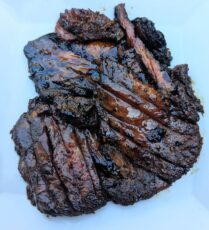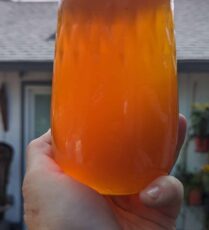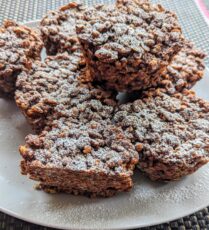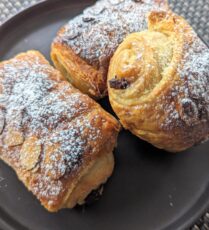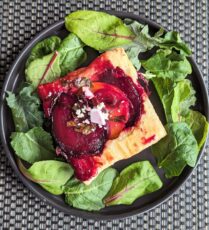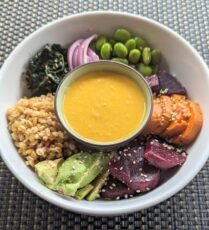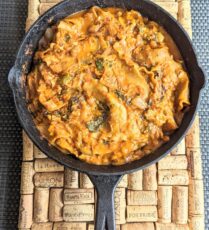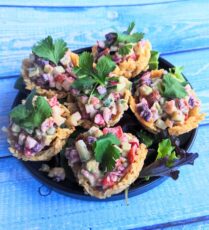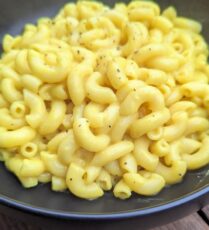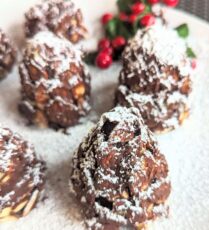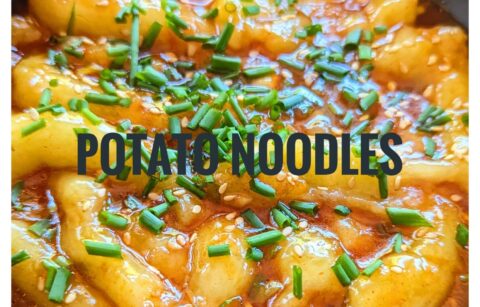The first time I ate daikon was in a small restaurant in Japan. It came in the form of thinly sliced pickles served before the main dish. It looked like potatoes but tasted like a peppery and lightly sweet radish. I could feel my digestive enzymes kick in and that’s exactly why Japanese start their meals with a small dish of pickles.
What is a Daikon radish
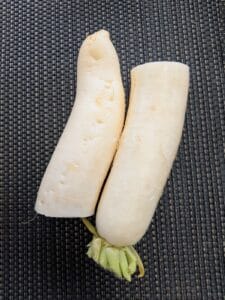
It is a staple root vegetable in Japanese cuisine that is used in salads, pickles and soups. Also called white, winter or Japanese radish, this is not your average radish! I grew up eating finger size pink and white crunchy radishes that were lightly dipped into fine salt. Daikon on the other hand is an impressive winter radish that can be the size of your forearm! Which explains why Daikon means big root in Japanese!
But there is more than meets the eye. I recently learned that there are 3 different parts to a daikon (not counting the leaves). The top part is the sweetest and best used raw in salads and pickled (it can be a little yellow). The middle section is sweet and peppery and best simmered in broth. The bottom part is the most peppery and ideal for soups and pickles. If you grow daikon, the whole plant is eatable and delicious leaves and root.
From a nutritional standpoint, daikon is 95% water and rich in potassium and vitamin C. It is low in calories, high in fiber, calcium, iron, and potassium. A great addition to heavy or fried food as it will help break down the fat. Daikon is in fact a natural digestive helper because of the various enzymes it contains. Note that cooking daikon will kill these enzymes so you want the digestive benefits you should mostly consume daikon raw.
Growing daikon
There are 3 cultivars: oblong, tapered, and round.
Best planted in mid-summer to early fall (growing zones 2-11). Daikon radishes make a great cover crop that will loosen soil and even reduce erosion. Direct seed 2 months before the first frost into loosened soil. You will need to thin the seedlings to give enough space for the roots to grow. It takes between 50- 70 days to grow a foot long daikon. The top of the radish will stick out of the soil as it grows, that’s normal and the time to harvest. If you wait too long you risk ending up with a spongy radish. Protect from frost with a cloth.
Best way to store daikon
If you bought a section of daikon, it is best to wrap it in plastic film and refrigerate it.
If you have a whole root, wrap it in newspaper and store in a dark place.
Because of its sheer size, and even though a daikon can keep up to a week or 2, you will want to use it fresh and cooked. Think pickled, in salads, roasted, in stews and soups.
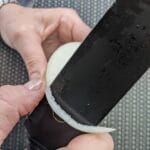
Inspired by a traditional Japanese dish called daikon Nimono or daikon Fukumeni this dish simmers slices of daikon in a special broth. When a daikon is cut in large sections, it looks just like a scallop, especially if you soften the edges. So why not making vegan scallops instead? For a more fishy flavor, you can add some seaweed like wakame, nori or kombu to the broth but it is optional.
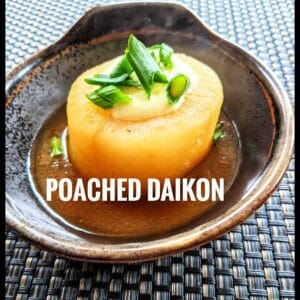
Poached Daikon Scallops with wasabi mayonnaise
Ingredients
- 1 medium daikon radish
Broth
- 3-4 cups of vegetable broth
- 1 tbsp dry rice
- 2 tbsp soy sauce
- 1 tbsp sugar (raw or white)
- 1 tsp salt
- 1 tbsp sesame oil
Wasabi vegan mayonnaise
- 1 tbsp wasabi paste
- 1/4 cup vegan mayonnaise (Vegenaise)
- 1/2 tsp sugar
- 1 cup chopped green onions
Instructions
Prepare the daikon radish
- Peel the daikon and cut thick slices the size of scallops.
- Trim the outer edges of both top and bottom to make the slices more realistic.
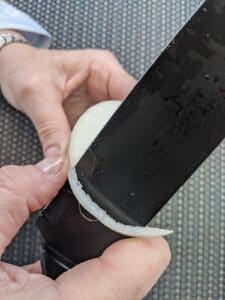
- Score a shallow cross on top to allow the broth to more easily penetrate.
- In a cooking pot, place each slices on the bottom and cover with water and the tablespoon of dry rice (for the starch).
- Simmer covered for 20 minutes. Drain and rinse any slimminess.
- Combine the soy sauce, sesame oil, sugar ,salt and vegetable broth.
- Put the daikon back in the pot, and pour broth over making sure that it covers all sliced. Simmer for another 20-30 minutes covered.
- Use a toothpick to make sure the radish is tender.
Wasabi mayonnaise
- Combine the vegenaise, the sugar and wasabi paste in a small bowl and stir. Taste and season.
Serve
- Place one of two scallops in a small bowl. Ladle some of the hot broth.
- Spoon some of the wasabi mayonnaise on top of the scallop, top with chopped scallions.


